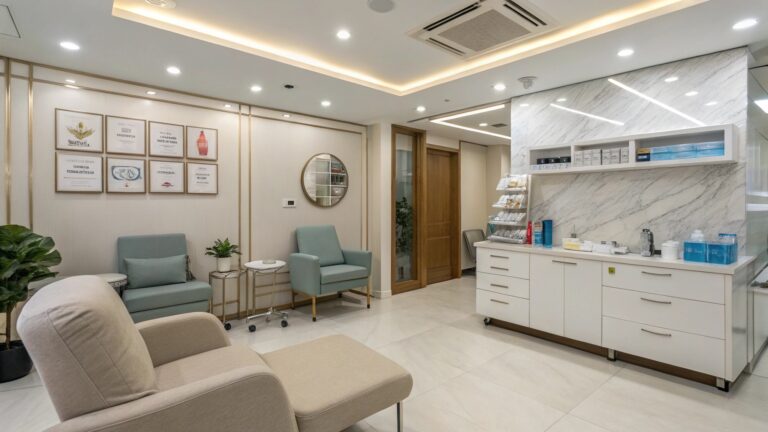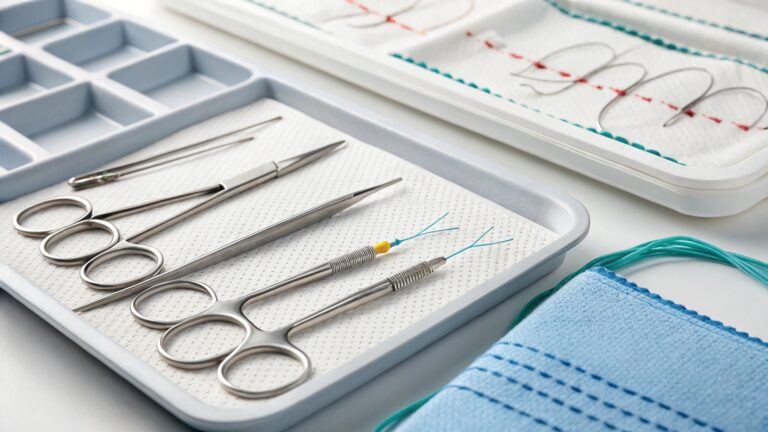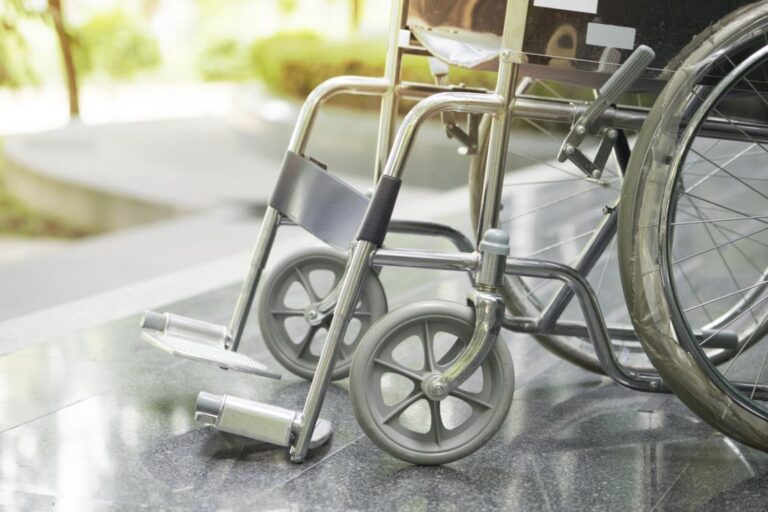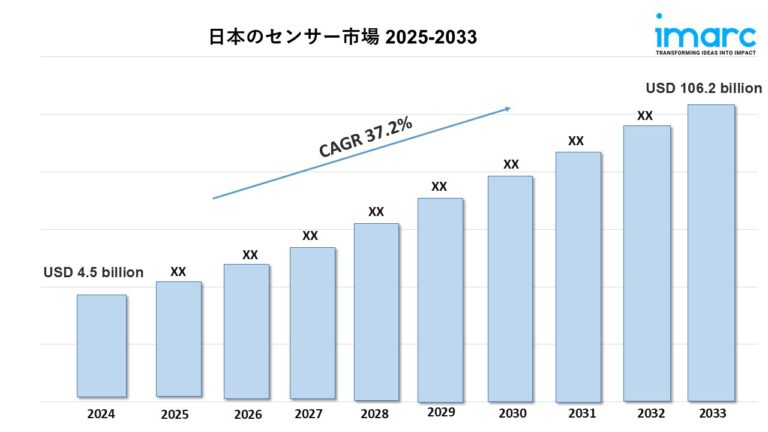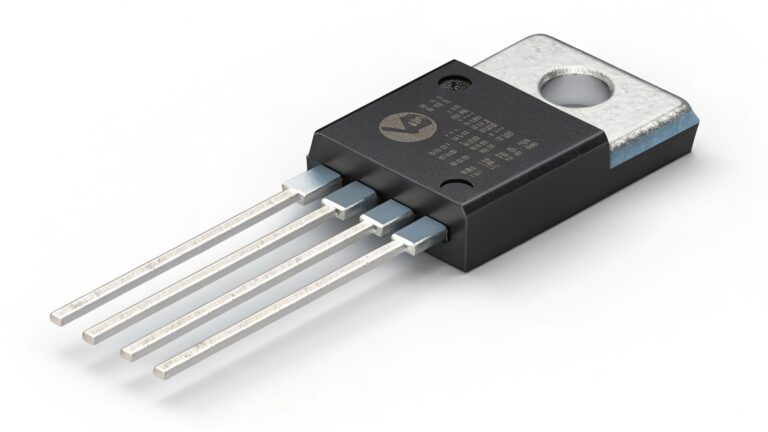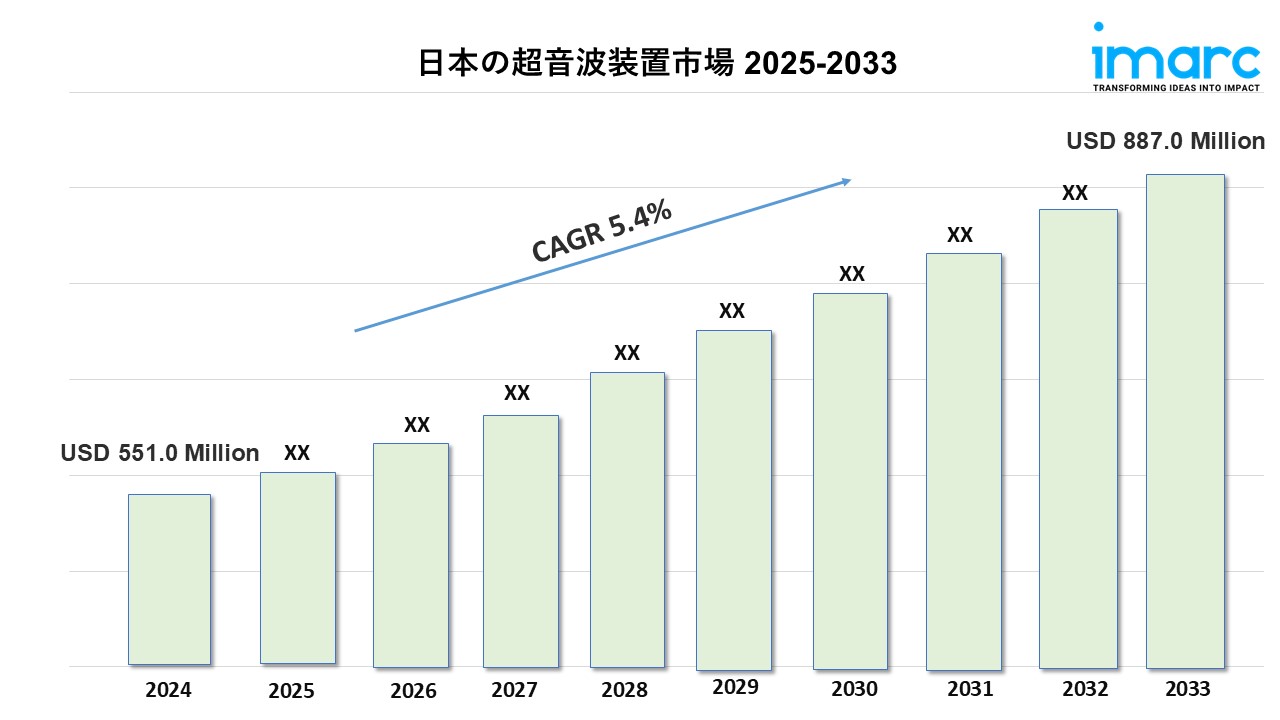
Japan Ultrasound Devices Market Size and Growth Overview (2025-2033)
Market Size in 2024: USD 551.0 Million
Market Forecast in 2033: USD 887.0 Million
Market Growth Rate 2025-2033: 5.4%
According to the latest report by IMARC Group, “The Japan ultrasound devices market size reached USD 551.0 Million in 2024. Looking forward, IMARC Group expects the market to reach USD 887.0 Million by 2033, exhibiting a growth rate (CAGR) of 5.4% during 2025-2033.”
Download a sample PDF of this report: https://www.imarcgroup.com/japan-ultrasound-devices-market/requestsample
How AI is Reshaping the Future of the Japan Ultrasound Devices Market
Artificial intelligence is fundamentally transforming Japan’s ultrasound devices market by enhancing diagnostic accuracy, workflow efficiency, and clinical decision-making capabilities across medical specialties. AI-powered image analysis algorithms are revolutionizing interpretation processes by automatically detecting abnormalities, measuring anatomical structures, and identifying potential pathologies with speed and precision that augment radiologist expertise. Deep learning models trained on vast datasets of annotated ultrasound images can recognize subtle patterns indicative of conditions like cardiac abnormalities, fetal anomalies, tumors, and vascular diseases that might be challenging for human observers to detect, particularly in complex or ambiguous cases. These intelligent systems provide real-time guidance during examinations, suggesting optimal probe positioning, adjusting imaging parameters automatically, and highlighting regions of interest that warrant closer examination, thereby reducing operator dependency and improving diagnostic consistency across different skill levels and clinical settings.
Beyond image interpretation, AI is optimizing operational efficiency and expanding ultrasound accessibility throughout healthcare systems. Intelligent workflow management systems predict examination durations, optimize scheduling, and allocate resources efficiently based on historical patterns and real-time demand fluctuations, reducing patient wait times and maximizing equipment utilization. AI-driven automation of routine measurements, report generation, and documentation tasks frees sonographers and physicians to focus on complex diagnostic challenges and patient interaction, improving productivity without compromising care quality. Portable and handheld ultrasound devices integrated with AI are democratizing access to diagnostic imaging in primary care settings, rural areas, and emergency situations where traditional equipment and specialized expertise may be unavailable. Cloud-based AI platforms enable remote interpretation, collaborative consultations, and continuous learning from accumulated case data, supporting telemedicine initiatives and knowledge sharing across Japan’s healthcare network.
The integration of AI with complementary imaging modalities and clinical information systems is creating comprehensive diagnostic ecosystems that enhance patient care pathways. AI algorithms can correlate ultrasound findings with laboratory results, patient histories, and other imaging studies to provide holistic clinical assessments and treatment recommendations tailored to individual circumstances. Predictive analytics identify patients at risk for specific conditions based on ultrasound examinations and demographic factors, enabling proactive interventions and preventive care strategies. Furthermore, AI is accelerating research and development in ultrasound technology by analyzing performance data, identifying equipment improvement opportunities, and validating new imaging techniques through systematic evaluation of clinical outcomes. As Japan’s healthcare system faces challenges related to aging demographics, physician shortages, and increasing demand for diagnostic services, AI-enhanced ultrasound technologies are proving essential for maintaining high-quality, accessible, and efficient medical imaging services that support early detection, accurate diagnosis, and effective treatment across diverse patient populations and clinical scenarios.
Japan Ultrasound Devices Market Trends & Drivers
The Japan ultrasound devices market is experiencing robust growth driven by the country’s rapidly aging population, increasing prevalence of chronic diseases, and healthcare system emphasis on early diagnosis and preventive care. The elderly demographic requires frequent medical imaging for cardiovascular monitoring, cancer screening, musculoskeletal assessments, and prenatal care, creating sustained demand for ultrasound equipment across hospitals, clinics, and diagnostic centers. Ultrasound’s advantages over other imaging modalities—including safety (no ionizing radiation), real-time visualization, portability, and cost-effectiveness—make it particularly suitable for routine examinations and continuous monitoring of chronic conditions like heart disease, diabetes complications, and kidney disorders that disproportionately affect older populations. Additionally, technological advancements producing higher image quality, enhanced Doppler capabilities, and 3D/4D visualization are expanding clinical applications and improving diagnostic confidence, encouraging healthcare providers to upgrade existing equipment and adopt ultrasound for previously underserved specialties.
Government healthcare initiatives, reimbursement policies, and regulatory frameworks are significantly influencing market dynamics and adoption patterns. Japan’s universal healthcare coverage ensures patient access to diagnostic services, while reimbursement structures that favor non-invasive imaging modalities support ultrasound utilization across diverse clinical scenarios. Regulatory approvals for innovative ultrasound technologies, including AI-enhanced devices, portable systems, and specialized applications, are accelerating market introduction of advanced solutions that address evolving clinical needs. The government’s promotion of healthcare digitalization, telemedicine expansion, and regional medical networks aligns well with portable and cloud-connected ultrasound devices that enable remote consultations and distributed care models. Furthermore, physician training programs, professional society guidelines, and quality assurance initiatives emphasize competency in ultrasound techniques across multiple specialties beyond radiology—including emergency medicine, obstetrics, cardiology, and critical care—broadening the user base and driving equipment demand throughout Japan’s comprehensive healthcare infrastructure.
The Japan ultrasound devices market forecast offers insights into future opportunities and challenges, drawing on historical data and predictive modeling.
Japan Ultrasound Devices Industry Segmentation
The report has segmented the market into the following categories:
Breakup by Type:
- Stationary Ultrasound
- Portable Ultrasound
Breakup by Technology:
- 2D Ultrasound Imaging
- 3D and 4D Ultrasound Imaging
- Doppler Imaging
- High-intensity Focused Ultrasound
Breakup by Application:
- Anesthesiology
- Cardiology
- Gynecology/Obstetrics
- Musculoskeletal
- Radiology
- Critical Care
- Others
Breakup by Region:
- Kanto Region
- Kinki Region
- Central/Chubu Region
- Kyushu-Okinawa Region
- Tohoku Region
- Chugoku Region
- Hokkaido Region
- Shikoku Region
Request a Customized Version of This Report for Deeper Insights: https://www.imarcgroup.com/request?type=report&id=17073&flag=E
Competitive Landscape
The market research report offers an in-depth analysis of the competitive landscape, covering market structure, key player positioning, top winning strategies, a competitive dashboard, and a company evaluation quadrant. Additionally, detailed profiles of all major companies are included.
Recent News and Developments in Japan Ultrasound Devices Market
- June 2025: Japan Health is an upcoming international trade exhibition focused on the medical and healthcare sectors, debuting in June 2025 at INTEX Osaka. This exhibition is officially connected to EXPO 2025 Osaka, Kansai – Health & Wellbeing Week. The gathering will unite a diverse group of attendees, such as medical device producers, startups, research organizations, and government entities from Japan and overseas—to display Japan’s technologies and services, which will draw international interest as a significant occasion during the Expo timeframe. During the Japan Health event, ABLIC will present its advanced ultrasound imaging technology, bolstered by the acquisition of Socionext’s medical business in December 2024.
- April 2025: Clairvo Technologies Inc. has entered into an extensive collaboration agreement with Shukun Technology Co., Ltd. for the market in Japan. This extensive partnership agreement seeks to create a framework and enhance collaboration for the ongoing and successful launch of Shukun’s medical imaging AI products in the Japanese market. Shukun offers an extensive range of AI solutions on its “Digital Body AI Platform,” addressing conditions related to the heart, brain, chest, abdomen, and musculoskeletal system, and is compatible with multiple imaging techniques like CT, MRI, X-ray, mammography, and ultrasound.
- February 2025: Canon Medical Systems Corporation, a worldwide leader in imaging solutions, introduces Aplio beyond, a flexible multi-functional ultrasound system that integrates clinical, operational, and ergonomic superiority in a compact, quiet, and environment-friendly design. Designed for ultrasound experts operating in hospitals, bustling imaging facilities, and advanced practices facing substantial workloads and complex patient demographics, it offers users top-quality imaging for everyday tasks, specialized examinations, and advanced interventions.
Future Outlook
The Japan ultrasound devices market is positioned for sustained expansion through 2033, driven by demographic trends, technological innovation, and healthcare system priorities emphasizing accessible, safe, and effective diagnostic imaging. The integration of artificial intelligence, portable form factors, and cloud connectivity will enhance clinical capabilities while improving workflow efficiency and accessibility. With continued investment in healthcare infrastructure, regulatory support for innovation, and growing clinical applications across specialties, the market presents substantial opportunities for manufacturers, healthcare providers, and stakeholders committed to advancing diagnostic ultrasound technology and improving patient outcomes throughout Japan’s evolving healthcare landscape.
Key Highlights of the Report
- Market Performance (2019-2024)
- Market Outlook (2025-2033)
- COVID-19 Impact on the Market
- Porter’s Five Forces Analysis
- Strategic Recommendations
- Historical, Current and Future Market Trends
- Market Drivers and Success Factors
- SWOT Analysis
- Structure of the Market
- Value Chain Analysis
- Comprehensive Mapping of the Competitive Landscape
Note: If you require specific details, data, or insights that are not currently included in the scope of this report, we are happy to accommodate your request. As part of our customization service, we will gather and provide the additional information you need, tailored to your specific requirements. Please let us know your exact needs, and we will ensure the report is updated accordingly to meet your expectations.
About Us
IMARC Group is a global management consulting firm that helps the world’s most ambitious changemakers to create a lasting impact. The company provides a comprehensive suite of market entry and expansion services. IMARC offerings include thorough market assessment, feasibility studies, company incorporation assistance, factory setup support, regulatory approvals and licensing navigation, branding, marketing and sales strategies, competitive landscape and benchmarking analyses, pricing and cost research, and procurement research.
Contact Us
IMARC Group
563-13 Kamien, Iwata City Country, SHIZUOKA, JP, 4380111
+1-631-791-1145
